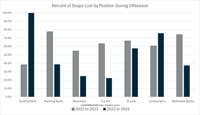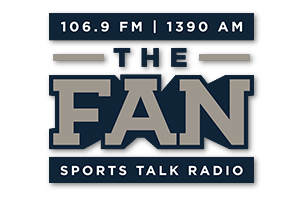LOGAN — The spring transfer portal window, to put it mildly, wasn’t the best of times for Utah State football and its head coach Blake Anderson.
After weathering the winter transfer portal almost spectacularly, losing only two players from the two-deep depth chart — Devin Dye and Ralph Frias — the spring window saw around five expected rotation players or starters depart the program, most of whom were enticed away by NIL offers from other schools.
With the transfer window closed, the damage is pretty much done, but it’s still a solid amount of damage. Approximately 47 players from last year’s team have departed, either through graduation or the transfer portal. For reference, the 2022/summer of 2023 offseason ended up with 46 departures.
Ending up with even more attrition (and mind you that 47 isn’t including a handful of players who transferred to USU in the winter window only to leave in the spring) than the 2022-23 offseason is a bad sign on its face. Attrition nearly crippled Utah State’s 2023 season as it spent most of the offseason simply trying to field a roster. Anderson would cite these offseason losses repeatedly during the team’s tough stretches up to and including the final game of the season.
So is it time for Utah State fans to panic? Maybe. Though more likely it’s a minor setback to what can still be a successful 2024 season. Context, as always, is the key to seeing why.
A significant portion of the ‘22-23 attrition occurred within the two-deep depth chart, with some position groups almost entirely gutted by departures via graduation and the transfer portal. The Aggies lost roughly two-thirds of its running back, offensive line, defensive line, linebacker and defensive back production/snaps.
Contrast that with this year where only two position groups have seen a similar scaled loss — quarterback and linebacker. Here’s a visual comparison of experience lost using snaps played in 2023 as the measuring stick.


The percentage of experiences lost is way down across five of the seven position groups. Even being a little nit-picky about how close the defensive line numbers are still makes it a majority in favor of this offseason. Of course, if we’re nit-picking defensive line toward the negative, it’s worth nit-picking quarterback the other way. The 100 percent loss in snaps comes from the early retirement of Levi Williams and transferring of Cooper Legas and McCae Hillstead. The thing is, neither Legas nor Hillstead were in line to start by the time they left. Iowa transfer Spencer Petras earned the QB1 job over both players. Assuming at least decent health from Petras, there’s much less reason to worry about lost experience since said experience lost out to a new player.
Looking at it another way, you can break things down by what you could call “rotation players” i.e., the starters combined with players that would see regular time. Essentially, the top “X” number of players in each position group which for this comparison will be determined as the top two quarterbacks, two running backs, four receivers, seven offensive linemen, six defensive linemen, four linebackers and six defensive backs. This comes out to a top 31 players that would have the most impact across the offense and defense. After 2022, the Aggies lost 19 such players. This offseason that number is just 12.
Anderson basically summed up this sentiment after spring ball, granted that was before several guys like Anthony Switzer and Shaun Dolac entered the portal.
“From this time last year, to now, it’s better football team,” Anderson said after the April 20 spring scrimmage. “We’re not done by any means. But I feel like we’ve added value in every room through recruiting. Guys have developed. A lot of guys are playing better ball than this time last year. I feel like it’s putting us in a good position going into the summer.”
Let’s not pretend this is still perfectly OK or that the Aggies escaped unscathed. Doing better than the 2022-23 in terms of offseason attrition is a bar low enough that it’s embedded in the sidewalk. The portal still left a gaping hole at linebacker, chipped away at a defensive line that already needed a lot of improvement, and created an “all-in” scenario at quarterback with Petras where there’s not really another great option if he goes down for multiple games. What is OK are the Aggies chances to be a competitive team or at least not blame everyone’s shortcomings on inexperience or lack of development time.
Anderson has done about as well as one could hope given his situation. Star players like Jalen Royals and Ike Larsen have stuck around despite significant offers from other schools trying to entice them into the transfer portal. The offense is largely in tact and the defense has a path to improvement form last season. Whether the team is successful or not shouldn’t be blamed on the portal. The Aggies will make their own destiny this year, for better or worse.







